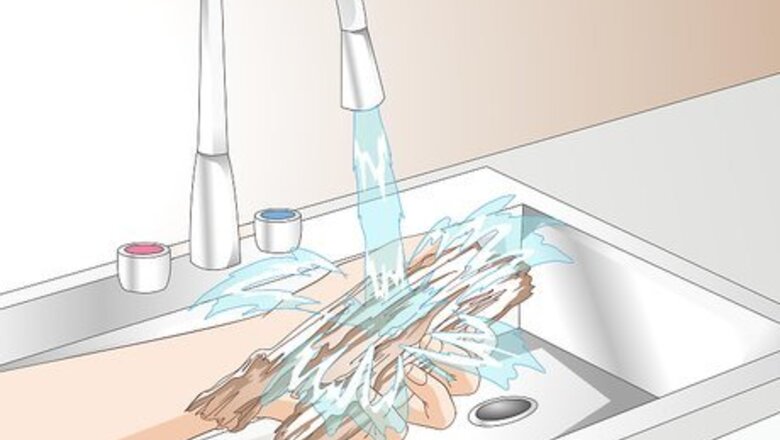
views
Cleaning & Treating Driftwood Using Water Solutions
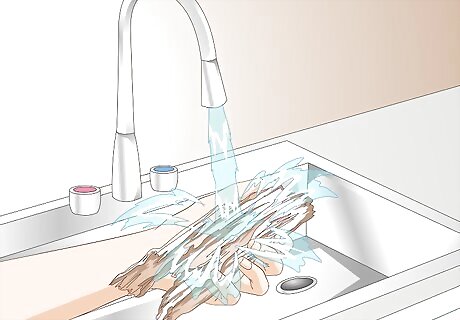
Power or pressure wash it. Hold your wood underneath a steady stream of water until you feel as if it is clean. Monitor this process carefully as too strong of a water stream can start to strip away the wood. You can also break off finer wood details if you are not careful. Allow the wood to dry outside when finished.
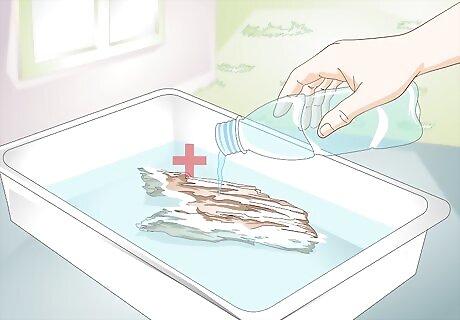
Submerge the wood in distilled water. ‘Curing’ driftwood is the most popular cleansing method amongst aquarium users. Place the wood inside a large container. Slowly pour distilled water into the container until the wood is completely covered. Soak for one to two weeks. Remove the wood and allow it to dry in a cool location. You will notice the water darkening over time. This is normal. It is the result of tannins being released. Leaching all tannins from your wood will keep your aquarium water clear. For maximum effectiveness, replace the soaking water if it takes on a ‘tea-color.’ When the distilled water appears clear and is no longer noticeably discolored, it is time to remove the driftwood. This is also a good, chemical-free way of diminishing the buoyancy of your driftwood. Ideally, you want your wood to sit on the bottom of an aquarium without floating to the top.
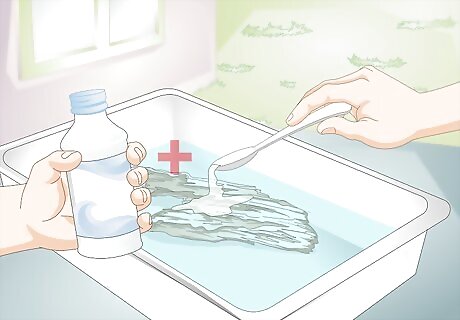
Soak it in a bleach solution. Get a large container, mix bleach and distilled water together, and place your driftwood under the water. Use 2 teaspoons of bleach per gallon of distilled water. Soaking in a bleach solution will help to kill off any spores or bacteria that are lingering on the wood and help preserve it. Keep the driftwood submerged for a minimum of 15 minutes. If you plan to use your driftwood in an aquarium, it is best if you follow-up a bleach soak with a straight-distilled water soak. For the safety of your fish, all traces of bleach need to be out of the wood.
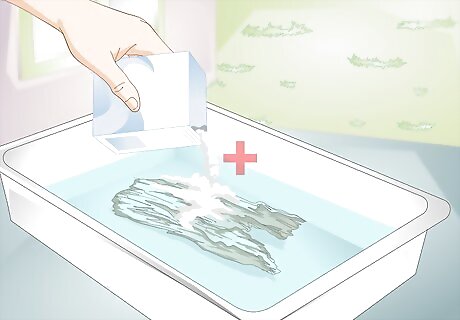
Soak it in soda water. Woodworking artisans often prefer to use a soda bath to clean their driftwood. Buy a cleansing soda, such as Arm & Hammer Super Washing Soda. Get a large container and mix hot water and the soda together. Keep adding soda until it stops dissolving into the water easily. Then, lower your driftwood into the mixture. Soak for 48 hours minimum. If your driftwood keeps rising to the surface when soaking, you may need to place a rock or other heavy object on it to hold it down and keep it submerged.
Cleaning & Treating Driftwood Using More Aggressive Measures
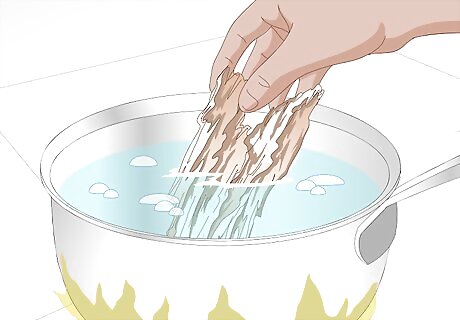
Boil it. This is one of the quicker ways to sterilize driftwood found in nature. Place the driftwood in a pot filled with boiling water. Keep the driftwood boiling for 1-2 hours. You may need to refill the water as it boils away. When the time is up, drain the water out, replace it, and repeat the process. Many aquarists like this method as it is virtually guaranteed to kill any fungal spores found on the driftwood.
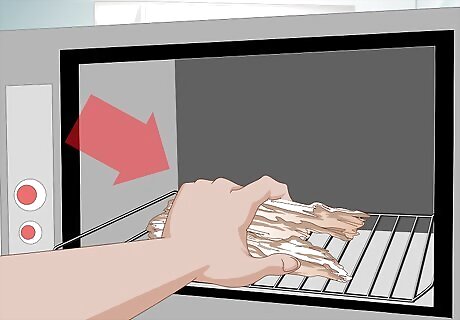
Bake the wood in the oven. Get out a cookie sheet and cover it with foil. Place your driftwood pieces on the foil, not overlapping. Bake the wood at 200 degrees for 2-4 hours. You will want to closely monitor this process to ensure that the wood does not start to singe or burn. When finished, set the wood aside and allow it to cool.
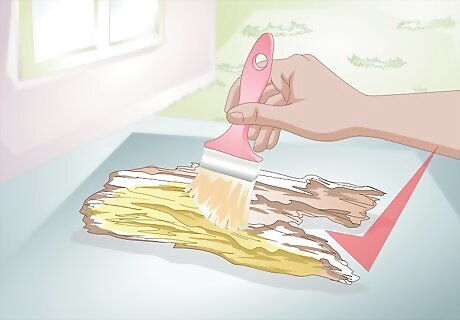
Apply a sealant. If you don’t want to bother with extensive cleaning methods and if you plan to use your wood for a project, you might consider simply applying a varnish or coating to the wood as is. Any grains present on the wood will lead to an uneven finish, but the coating itself will sanitize the wood to some extent.
Removing Solid Debris from Driftwood
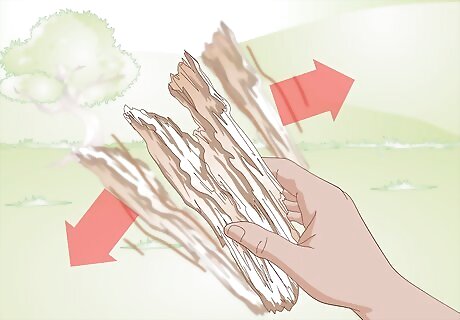
Shake it. If you picked up your driftwood from a natural location, such as a lake, you might see particles of dirt sticking to the wood’s surface. Grab the piece by the end and give it a good shake. Perhaps tap it gently on the ground a few times to loosen any additional grains. This also helps to remove any pests, like ants, from the wood.
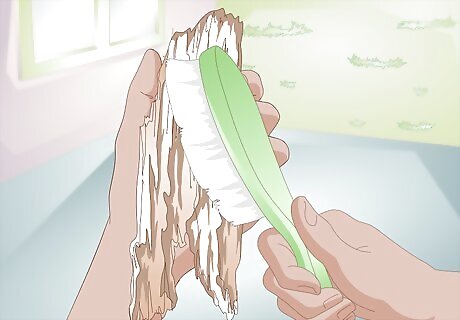
Scrub it. If you are working with ‘outside’ wood then you may need to get more serious about removing the grime. Grab a sturdy brush and scrub the wood. Try to go over as much of the surface area as you can. You may want to repeat the scrubbing process after the soaking the wood as well. If you plan to use the driftwood for a craft or furniture project, you may want to carefully consider your choice of brush. A soft-bristle brush will not scratch the wood whereas a wire brush will clean more effectively but can also leave scrub marks behind. It is generally a good idea to scrub with the grain. A wire brush is a good option if you need to remove bark.
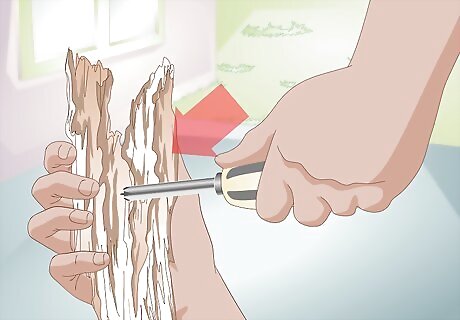
Pick at it. Driftwood often contains small nooks that are hard to fully clean. Use a screwdriver or knife to dig into these areas. Carefully apply pressure so that you don’t splinter the wood. If you want a gentler method, push into crevices using the edge of a slightly damp toothbrush. This is especially effective at removing sand. You can also use an air compressor to shoot concentrated bursts of air into deeper holes. This is less damaging then picking and often equally effective.
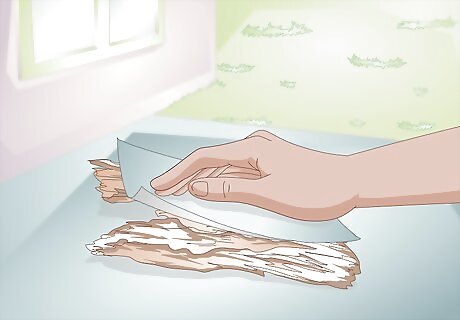
Rub it with sandpaper. Removing the outer layer of the wood is one way to get it clean. Use a garnet sandpaper with a light grit. This type of sandpaper works well with handcrafted projects and will not overly scratch the wood. If you want to dig deeper into the wood (perhaps in a rotten area), upgrade to a higher grit. If you are unsure about what your driftwood project requires, go to your local home improvement store to feel your various sandpaper options firsthand.
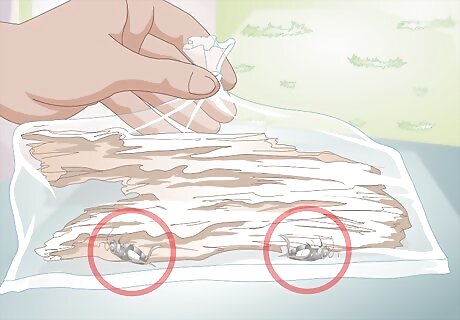
Kill off any bugs. No one wants driftwood that is infested by insects. Shaking it off will remove some pests, but to get extra reassurance seal your driftwood in a plastic bag and leave it for a few days. Check back for evidence of dead bugs. A more aggressive way to kill off insects is to spray an insecticide into the bag before sealing it. Be warned that the chemical residue from this method could prove potentially fatal to fish if the wood is intended for an aquarium. This is best used in crafting or woodworking situations.











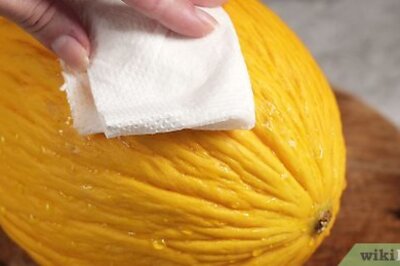





Comments
0 comment